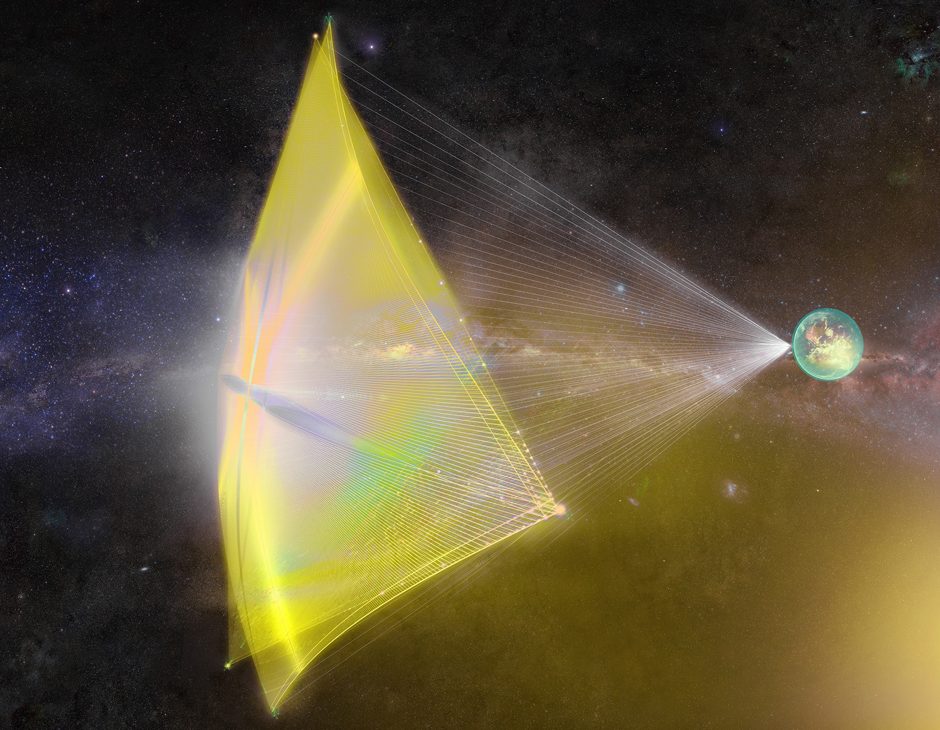It was 1903 that the Wright brothers made the first successful self-propelled flight. Launching themselves to history, they set the foundations for transatlantic flights, supersonic flight and perhaps even the exploration of the Solar System. Now we are on the precipice of travel among the stars but among the many ideas and theories, what is the ultimate and most effective way to explore our nearest stellar neighbours? After all, there are 10,000 stars within a region of 110 light years from Earth so there are plenty to choose from.
It’s not just the stars that entice us to explore beyond our Solar System. Ever since the first exoplanet discovery in 1992 we have been discovering more and more alien worlds around distant stars. The tally has now reached over 5,500 confirmed exoplanets and they too demand our attention as we reach out among the stars. There have been many ideas and technologies proposed over the past few years but to date, even Proxima Centauri (the nearest star system to our own) remains out of reach.
In his thesis recently published, lead author Johannes Lebert from the Technische Universität München (TUM) attempts to develop a strategy, based on existing interstellar probe concepts and knowledge of nearby star systems. Lebert was driven by the exoplanet discoveries that continue at pace and the development and interest, both commercially and technically in interstellar probes. Not only does he explore the technologies but he also looks at the returns too.

In the strategy developed in the thesis he looks at the two main objectives which are duration of the mission and the returns. By returns he refers to the sum of all rewards provided by the stars explored during the mission and of course be largely scientific. He considers a multi vehicle approach using several probes which do not return to Earth and are capable of exploring different stars thereby maximising the mission returns. Finally he explores the routing of such a mission to ensure maximum mission returns. Succinctly he calls this his ‘Bi-objective multi- vehicle open routing problem with profits.’
The thesis concludes with several recommendation. First that the use of efficient routing around the stars, a more limited number of probes can be used, limiting reducing fuel costs. This should be balanced by the mission returns which increase faster should more probes be used to explore the same number of stars simultaneously. This does however increase mission costs due to increase fuel costs. Whichever strategy is used, small-scale remotely operated or autonomous craft are far more suited to the need.
Lebert goes on to explain that higher probe numbers also brings the benefit that probes can be tailored to suit the star systems they are destined to explore. Unlike a smaller number of probes that will have to cater for a greater range of systems. There is a concept known as the ‘derived scaling law’ which articulates that higher probe numbers do inherit a risk of less efficient deployment.
It’s an interesting read that reminds us that, whilst we are developing the probes, and there are quite a number on the drawing board; Breakthrough Starshot, Interstellar Express, Interstellar Probe, Innovative Interstellar Explorer, Tau Mission to name a few, we do need to consider just how we plan, manage and deploy to maximise the scientific gain.
Source : Optimal Strategies for the Exploration of Near-by Stars

